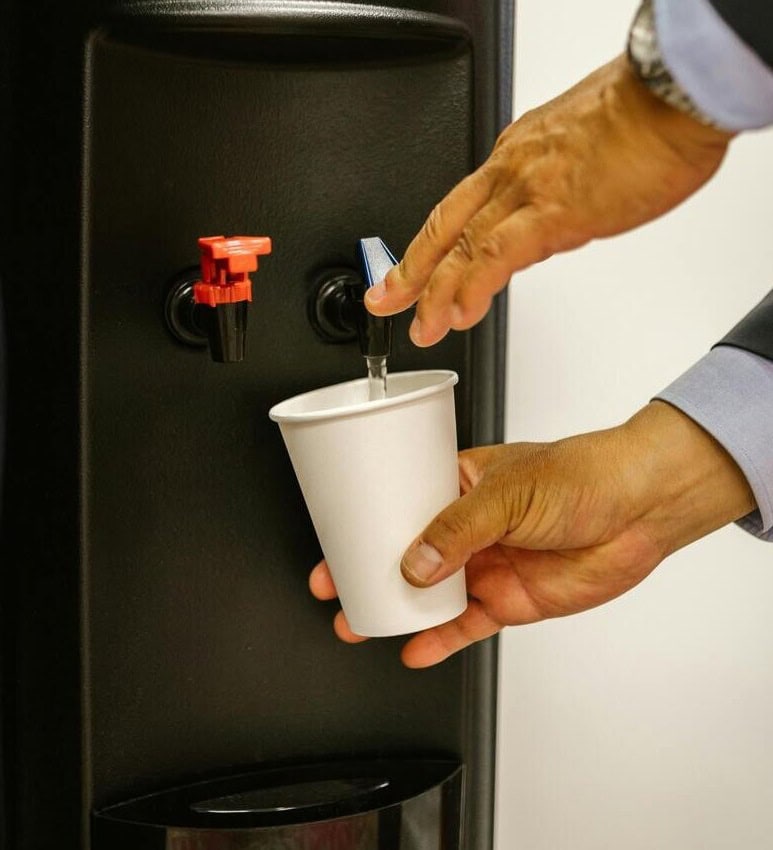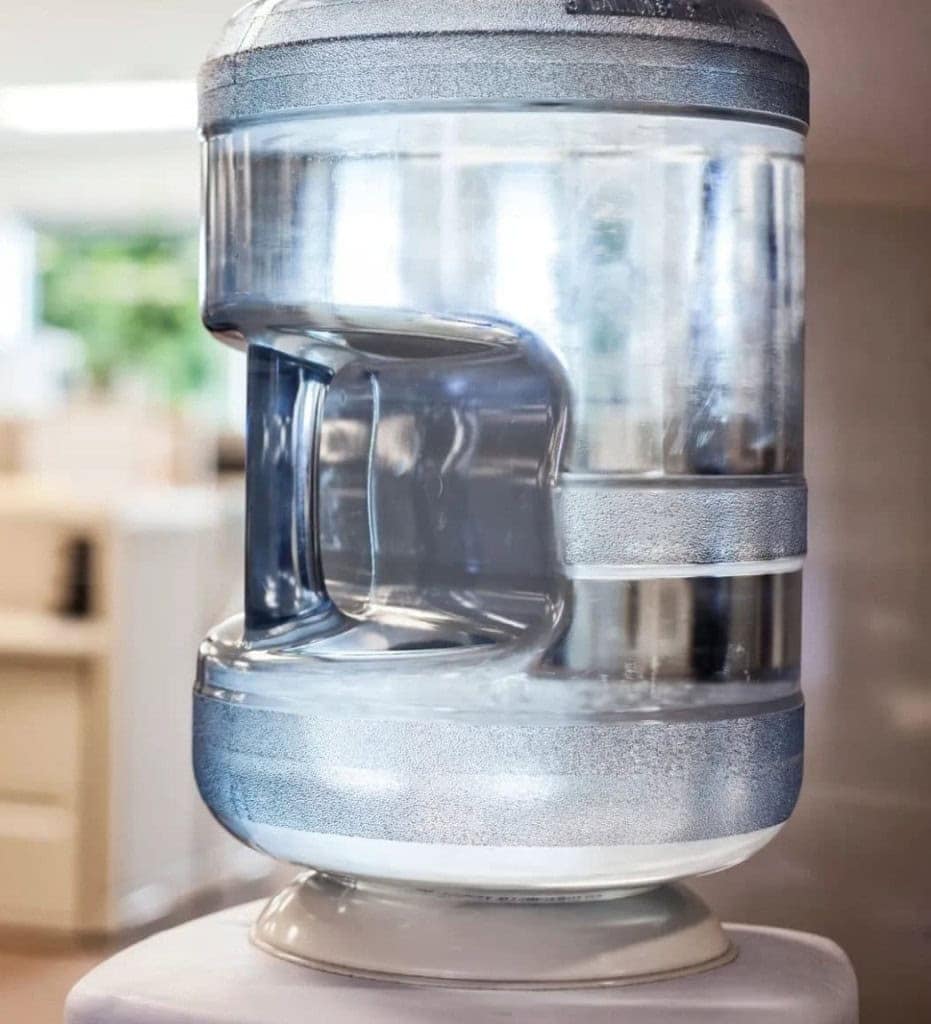When it comes to keeping your workforce fuelled and focused, choosing the right coffee machine can make all the difference. With the average UK worker consuming at least one cup of coffee daily, this decision affects far more than just taste—it impacts employee morale, client perception, operational efficiency, and your bottom line.
Choosing an office coffee machine can feel like a minefield. Get it right, and you’re the office hero. Get it wrong, and you’re dealing with daily complaints and hidden costs. The biggest tripwire? The milk.
This article provides a clear framework, backed by our real-world insights, to help you make the right choice for your specific business needs. We’ll cut through the marketing noise and give you the unvarnished truth about fresh versus powdered milk systems.
The Sensory Showdown: Taste, Texture, and Perception
While fresh milk has long been the gold standard for taste, modern granulated milk has significantly closed the gap. The real difference now lies in the user experience and what each option signals about your brand.
Fresh Milk delivers unmatched creaminess and natural sweetness, the benchmark for a true café-quality experience. It remains essential for businesses where premium hospitality is paramount, particularly client-facing firms such as law practices, consultancies, and luxury retail environments.
Powdered Milk requires a clear definition: we’re not talking about old-school coffee whiteners (e.g Coffee Mate). Modern granulated milk is 100% real, dehydrated milk. The slight caramelised flavour profile isn’t by chance, it’s a feature that many coffee drinkers actually prefer, adding a subtle richness that complements espresso-based drinks.
For the refined palate, fresh milk still wins. However, for the majority of daily instant coffee drinkers, the difference in a well-made latte from a modern machine is surprisingly minimal.
How to Decide Between a Fresh Milk or Powdered Coffee Machine
To make the best choice, you need to identify your business’s primary priorities. This step-by-step guide will walk you through the key questions to find your perfect match.
![]()
Step 1: Define Your Primary Goal
Is your top priority providing a premium, client-facing coffee experience? → Go to Step 2.
Is your top priority operational efficiency, low maintenance, and cost control? → Go to Step 3.
Step 2: Assess Your Operational Capacity (For a Premium Experience)
Do you have staff who can commit 15-20 minutes every single day to cleaning and refills? → A Fresh Milk machine is a viable option.
Is dedicating daily staff time to machine cleaning a challenge? → Choose a high-end Powdered Milk machine. You’ll get a fantastic coffee experience with less daily maintenance burden. → Go to Step 4.
Step 3: Evaluate Your Efficiency Needs (For Low Maintenance & Cost Control)
Do you need to cater to diverse dietary needs and want to eliminate waste from unpredictable office attendance? → A Powdered Milk machine is your best bet.
Is the main goal a reliable, no-fuss machine for standard coffee drinks at the lowest possible long-term cost? → A standard Powdered Milk machine is the most logical choice.
Step 4: Finalise Your Machine Choice
Based on your path, you now know whether a Fresh Milk or Powdered Milk system is the right fit. The final step is matching the machine’s capacity to your team’s size and needs.
Contact the Aquacool Team for help choosing the perfect model.
Fresh Milk vs Powdered in Real Workplaces
The Prestige Law Firm: Prioritises client perception and premium quality, and has administrative staff to handle daily cleaning.
Conclusion: A Fresh Milk machine. The JURA GIGA X3C Professional is the ideal solution, delivering the premium, barista-quality experience they need.
![]()
The Bustling Co-Working Space: Prioritises low maintenance and zero waste for a transient workforce.
Conclusion: A Powdered Milk machine. The Vitro X3 is perfect for high-volume environments whilst eliminating daily cleaning and wastage issues.
![]()
The Budget-Conscious SME: Focused on Total Cost of Ownership and operational simplicity.
Conclusion: A Powdered Milk machine. The Vitro S1 is excellent for smaller offices, offering a great range of drinks with minimal maintenance.
![]()
Fresh Milk vs Powdered Coffee Machine: Maintenance, Cleaning & Storage
This is where the practical differences become stark. Fresh milk demands a daily commitment to cleaning and logistics, whilst powdered milk offers a more “set and forget” convenience that can save significant time and money.
Daily Cleaning Regime
Fresh Milk Machines require a mandatory daily chemical cleaning cycle lasting 15-20 minutes. Skip this, and you’ll face bacterial growth, sour taste, and costly repairs. This isn’t optional – it’s essential for food safety compliance. Thankfully, some of our machines do come with an integrated cleaning & descaling program.
Powdered Milk Machines need only a simple rinse of the mixing bowls. This time saving represents a major operational win, especially in busy or shared environments where staff time is at a premium.
Storage Requirements
- Storage:
- Fresh milk requires dedicated refrigerated space, often at a premium in office environments.
- Powdered milk is shelf-stable and can be bought in bulk, stored in standard cupboards.
- Shelf Life & Wastage:
- Fresh milk’s short shelf life leads to inevitable wastage, particularly with hybrid working patterns where office attendance fluctuates unpredictably.
- Powdered milk boasts up to 18 months’ shelf life and generates virtually zero waste.
The Financials: Total Cost of Ownership
A simple cost-per-cup comparison is misleading for the true cost of coffee. But higher operational costs of fresh milk systems often make powdered milk the more cost-effective choice over the long term.
Machine Acquisition and Consumables
- Leasing Costs:
- Fresh milk systems typically fall into a higher price bracket (£££) due to more complex technology requiring additional cooling systems, cleaning mechanisms, and milk handling components.
- Powdered milk machines are generally more accessible, falling into a low-to-medium range (£-££).
- Cost-Per-Cup:
- Fresh milk might seem cheaper per litre, the higher volume needed per drink plus inevitable wastage often results in a higher effective cost per cup.
- Powdered milk, bought in bulk, offers more predictable and often lower cost per serving.
Hidden Costs
Labour: The 15-20 minutes of daily cleaning for fresh milk machines translates into significant annual labour cost (£££). Assuming a mid-level employee wage, this represents approximately £400-£600 annually, a cost that’s completely eliminated with powdered milk systems.
Wastage: Discarding unused fresh milk over weekends, holidays and lulls in usage creates recurring product costs (££) that are completely eliminated with shelf-stable powdered milk.
Coffee Machine Cost Comparison Table
| Cost Component | Fresh Milk System | Powdered Milk System |
| Annual Machine Lease | High (£££) | Medium (££) |
| Annual Consumables | High (£££) | Medium (££) |
| Annual Labour (Cleaning) | Significant Cost (££) | No Cost |
| Annual Wastage | Recurring Cost (£) | No Cost |
| Overall Annual Cost | High | Moderate |
| 3-Year Verdict | A Premium Investment | The Cost-Effective Choice |
Fresh Milk vs Powdered Coffee Machines for Oat Milk & Dairy-Free Alternatives
![]()
Both systems can now cater to the growing demand for dairy-free alternatives when choosing the right model.
The rise of oat milk and other plant-based preferences continues to accelerate across the UK, with a record one in three Brits now regularly choosing a non-dairy alternative.
Fresh Milk Systems: High-end machines can offer dual-milk functions, providing the best quality for alternatives but doubling the cleaning and wastage issues. Each milk type requires separate storage, monitoring, and disposal procedures.
Powdered Milk Systems: Modern systems offer high-quality granulated oat milk and other vegan powders. Machines like the aquacool Vitro X3 allow you to offer these options with extended shelf life and zero waste, perfect for hybrid work patterns where daily attendance remains unpredictable.
Your Next Step
The choice becomes clearer once you’ve assessed your priorities. Fresh milk delivers the ultimate sensory experience at a higher operational cost, whilst powdered milk provides convenience, reliability, and superior Total Cost of Ownership.
At Aquacool, we don’t just sell commercial coffee machines; we provide solutions. Whether your priority is the premium experience of a fresh milk system or the smart, efficient operation of a powdered milk machine, our team of experts can help you find the perfect fit. We offer a comprehensive range of machines to suit every need and budget.
Ready to find the right coffee solution for your business? Get in touch for a no-obligation quote and a free consultation with one of our UK-based specialists today.







